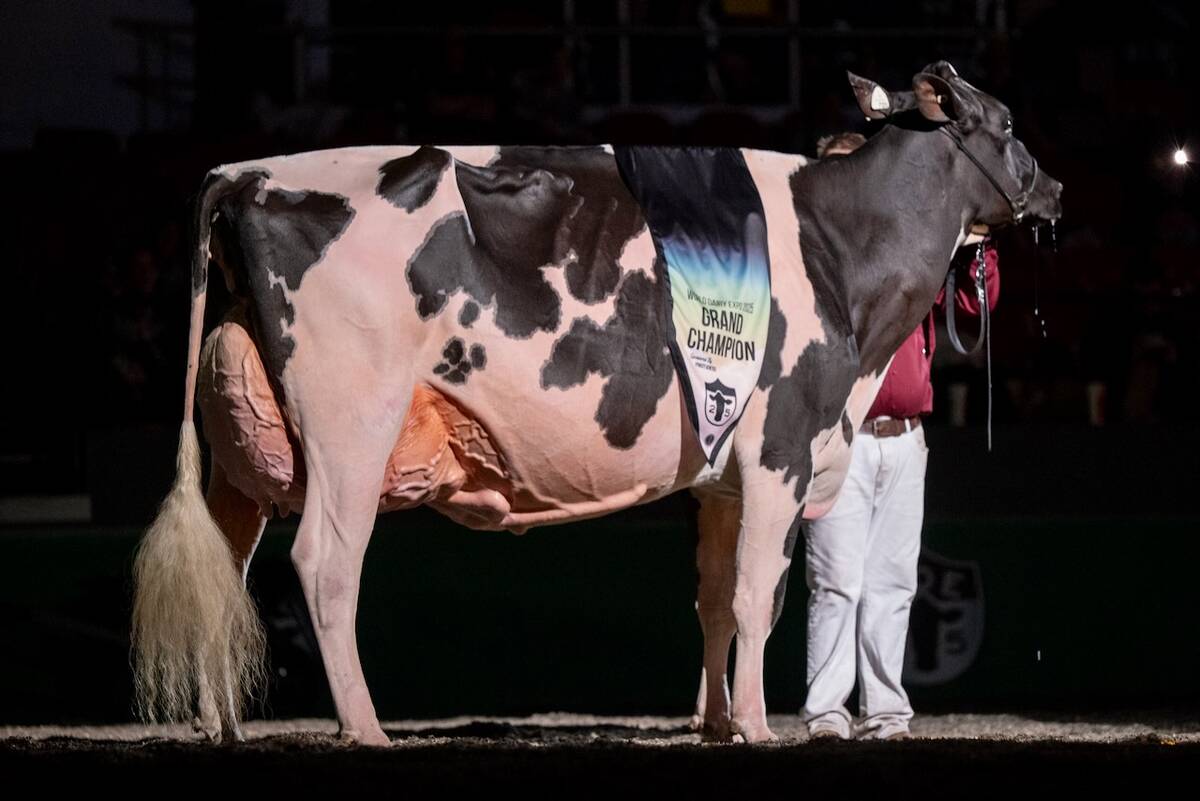The more the merrier | Ewes that produce twins and triplets can help boost profits
Significant differences between total flock production costs per lamb reveal a wide profitability spread among farmers, says an Alberta nutrition specialist.
The difference comes mostly from whether a farmer’s ewes produce singles, twins or triplets.
“You’ve got reduced cost per lamb sold based on (ewe) productivity,” ruminant nutritional specialist Dale Engstrom said during a recent session with Manitoba sheep producers.
“As you’ve got more lambs, you’ve reduced your costs.”
Maximizing births is a dominant concern in all multi-offspring livestock sectors. Hog farmers have concentrated on producing 30 pigs per sow per year, and many are now reaching that goal.
Read Also

Canadian-bred cow wins World Dairy Expo Holstein show
A cow bred in Saskatchewan, Lovhill Sidekick Kandy Cane, is the Grand Champion Holstein at the 2025 World Dairy Expo.
There’s no chance of hitting double-digit births with lambs, but the difference between bearing one, two or three lambs has a significant effect on profitability because it represents a far greater proportional difference, with twins being 100 percent more than a single birth and triplets being 200 percent more.
Engstrom said the difference was starkly apparent in a 2010 survey that looked at the profitability of Alberta sheep flocks.
The top 26 percent of producers paid $66.04 in feed costs for each lamb marketed, while the average cost was $87.99 and the bottom 26 percent paid $111.11.
That near-doubling of costs be-tween the bottom and top-most profitable producers was mostly caused by the number of lambs born, Engstrom said.
A big cost of operating a sheep flock is feeding ewes, so a lot of feed is consumed with little output if they are unproductive. Twins, while requiring a little more feed, produce a lot more lamb. Triplets have an even bigger impact.
A single lamb and ewe tend to cost $95 to feed, while a ewe and set of twins cost $135 until the lambs are sold.
Engstrom said many factors lead to good ewe productivity, but he be-lieves nutrition is the most important. Carefully managing the nutrition of ewes before they are pregnant and through the many stages of pregnancy and milk production is essential if farmers want to produce more twins.
Engstrom said farmers might be impressed by sows producing 10 piglets per farrowing, but a ewe producing twins actually has a bigger percentage of its bodyweight in its offspring.
A sow’s litter represents eight percent of its weight, while a ewe has 10 percent of its weight in a set of twins.
Sows produce much more milk than ewes, but some producers might be surprised to realize that a ewe that has birthed twins produces not much less milk compared to bodyweight than a dairy cow, and much more than a beef cow.
“She’s not like a beef cow,” said Engstrom. “She’s more productive than a beef cow. And what if she’s giving you triplets?”
Engstrom admitted he has a bias toward focusing on nutrition because that is his area of expertise, but he also said he’s not wrong because it is the most dominant cost for farmers and the best way to im-prove flock productivity.
“The best payback in your pocket financially is when nutritional needs are successfully met,” said Engstrom.
“The most serious negative consequences are when they’re not met.”















